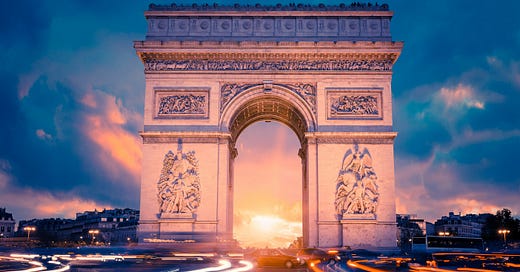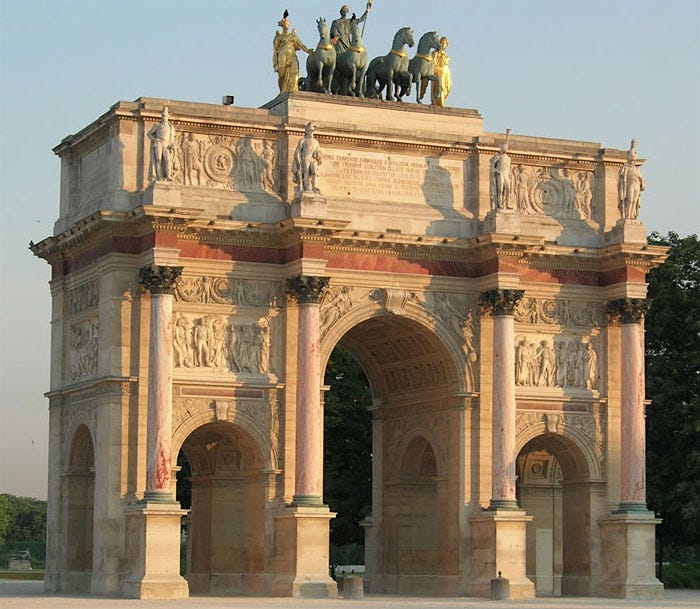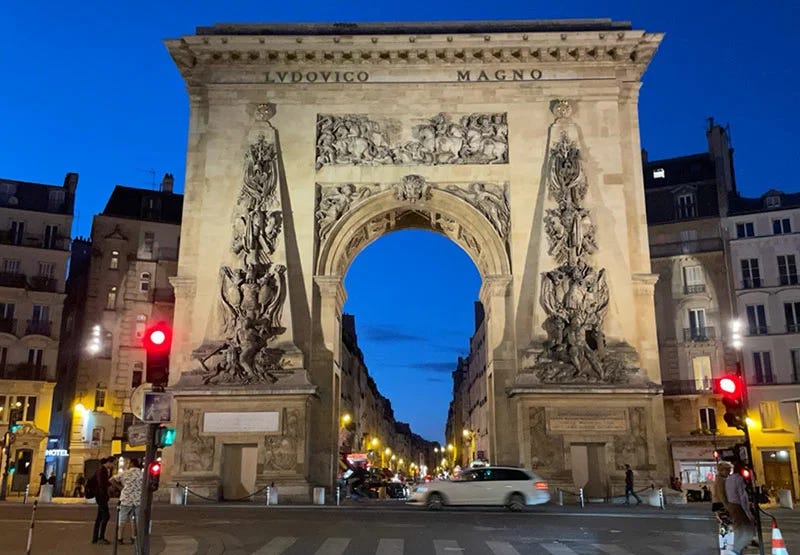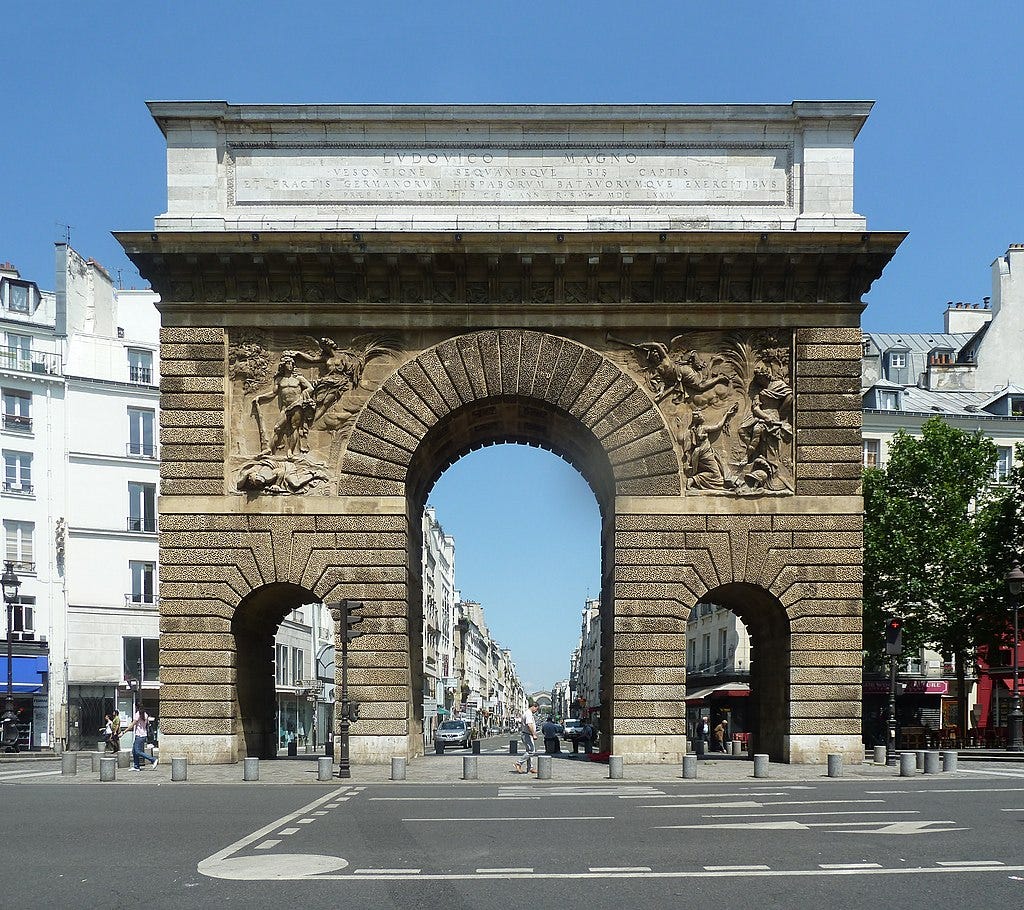Let's talk about structural arches.
(or me finding an excuse to post pictures of all the Triumphal Arches in Paris because Paris Olympics starts tomorrow)
Although the arch is less old than masonry, it is certainly very old. Evidence of fully developed brick arches in Egypt and Mesopotamia dates back to about 3,600 B.C.
An arch collects the vertical loads and turns them into lateral ones. These lateral loads run around the arch ring and are reacted by the abutments.
The structural function of an arch is to support the downward loads that come upon it by turning them into a lateral thrust that runs around the arch's ring and pushes the voussoirs against each other. The voussoirs then, naturally, push against the arch's abutments.
While Roman architecture may not have invented the arch or the vault, it perfected them. These architectural forms allowed Roman architects to create large, roofed structures without relying on pillars. They were also instrumental in their ability to construct great bridges and aqueducts, structures vital in developing and expanding one of the greatest empires in history.
A triumphal arch is a free-standing monumental structure shaped like an archway, often designed to span a road and usually standing alone. Typically crowned with a flat entablature or attic on which a statue might be mounted or bears commemorative inscriptions. The main structure is often decorated with carvings, sculpted reliefs, and dedications.
It was used to commemorate victorious generals or significant public events. Paris has four.
1/ The Arc de Triomphe at Place de l’Etoile
The most famous of Paris's triumphal arches, the Arc de Triomphe, is a monumental symbol of France's military victories and national pride. Commissioned by Napoleon Bonaparte in 1806.
Its prominent location along the Champs-Élysées, standing proudly at the centre of Place de l'Étoile, adds to its grandeur.
2/ Arc de Triomphe du Carrousel
Arc du Carrousel features intricately sculpted reliefs depicting scenes of Napoleon's triumphs, flanked by Corinthian columns and crowned by a statue of the Winged Victory of Samothrace.
3/ Porte Saint-Denis
Constructed in the 17th century, it commemorates Louis XIV's military victories and symbolises the city's grandeur during the reign of the Sun King.
4/ Porte Saint-Martin
Constructed in the 17th century, the arch commemorates the military victories of Louis XIV and serves as a symbol of the city's rich cultural heritage.







